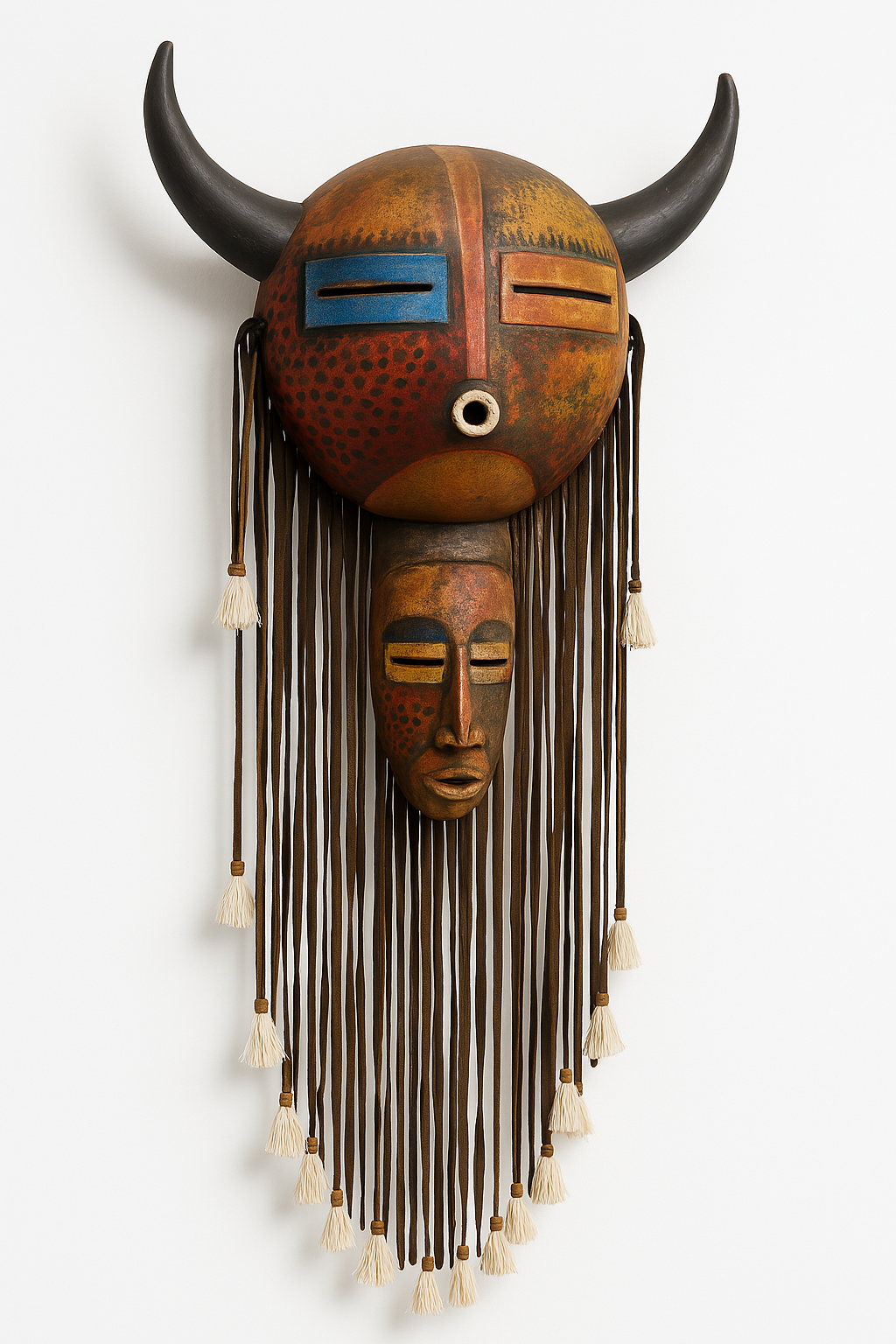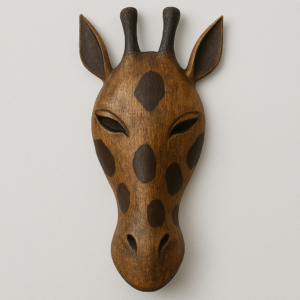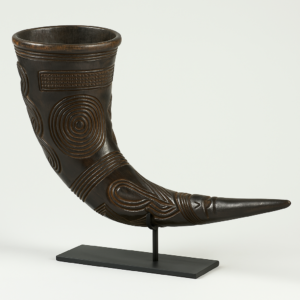Kipato Cha Moto, meaning “The Horns of Fire and Spirit” in Swahili, is a radiant embodiment of symbolic African mask artistry that unites ritual, identity, and elemental energy. It is a visually striking ceremonial piece with deep cultural resonance, likely inspired by the traditional art forms of the Bwa or Senufo peoples of West Africa—communities known for their deep reverence for nature, the cosmos, and the ancestral spirit world.
With its fiery color palette, stylized facial planes, and bold horn structure, Kipato Cha Moto channels the metaphysical essence of a guardian spirit—one tied to protection, transition, and elemental force. The name itself evokes both power and transformation, referencing the fire-like colors across its surface and the spiraling spiritual energy represented by its upward-curving horns.
At the top of the mask are two large, sculpted horns made from carved wood or composite fiber, painted in matte black to symbolize primal force and authority. Horns in African spiritual symbology are often associated with strength, virility, and spiritual aggression against negative forces. The curved tips arch outward like crescent moons, creating a celestial balance that crowns the mask with elegance and dominance.
The mask’s facial form is oval and mask-like, with a split down the center that aligns with many African dualist traditions—day and night, male and female, body and spirit. One eye socket is painted in vivid ochre and the other in a cool cobalt blue—an intentional chromatic contrast that may signify elemental duality (fire and water, sun and moon). The eyes are geometric slits, offering an abstract representation of spiritual vision beyond the physical world.
Just beneath the eyes, a circular mouthpiece opens into a hollow port—possibly symbolic of the breath of spirit or voice of the ancestors. It may also have served as a voice modifier for the performer, giving a distorted, ghostly tone during ritual dances. The cheeks and lower region of the face are patterned with red ochre spots—ritual markings tied to healing, vitality, and ancestral energy.
What sets Kipato Cha Moto apart is the long, flowing curtain of leather or plant-fiber tassels descending from the bottom of the mask. These vertical strands are meticulously arranged in a triangle that narrows toward the floor, each finished with small white tassels that sway with movement. This cascading fringe would have played a central role in performance, animating the mask with kinetic energy as the dancer moved to rhythmic drumbeats.
This mask likely served in ceremonies of transformation—either as part of harvest rituals, rites of passage, or ancestral invocations. During such performances, the mask would allow the wearer to shed their human identity and embody the spirit it represents. The long fringe would obscure the dancer’s body, further emphasizing the illusion that a divine presence had entered the space.
The coloration is both symbolic and artistic. Earth tones—red, ochre, and black—represent foundational energies in African cosmologies: blood and sacrifice (red), earth and fertility (ochre), and protection or spiritual might (black). These are contrasted with the calming blue, often symbolic of water, healing, and ancestral peace. The entire color palette suggests a piece rooted in balance and dual power—divine fire paired with spiritual serenity.
Crafted with meticulous attention to symmetry and storytelling, Kipato Cha Moto is not just an aesthetic artifact—it is a channel of sacred narrative. The harmony of geometric lines, the layering of textures, and the integration of fringe into the design mark this piece as the work of an artisan deeply grounded in both craft and culture.
In a modern context, Kipato Cha Moto brings gravitas and ancestral resonance to any space. Whether mounted in a cultural center, placed in a curated gallery, or showcased in a refined interior, it radiates a story of identity, ceremony, and elemental harmony. Its presence is both contemplative and commanding—a visual statement of strength, mystery, and cultural pride.
This piece is especially appealing to collectors of African ritual art, spiritual healers, or interior designers seeking to fuse organic materiality with sculptural depth. As a visual and symbolic artifact, it speaks in the language of myth, movement, and memory.





Reviews
There are no reviews yet.